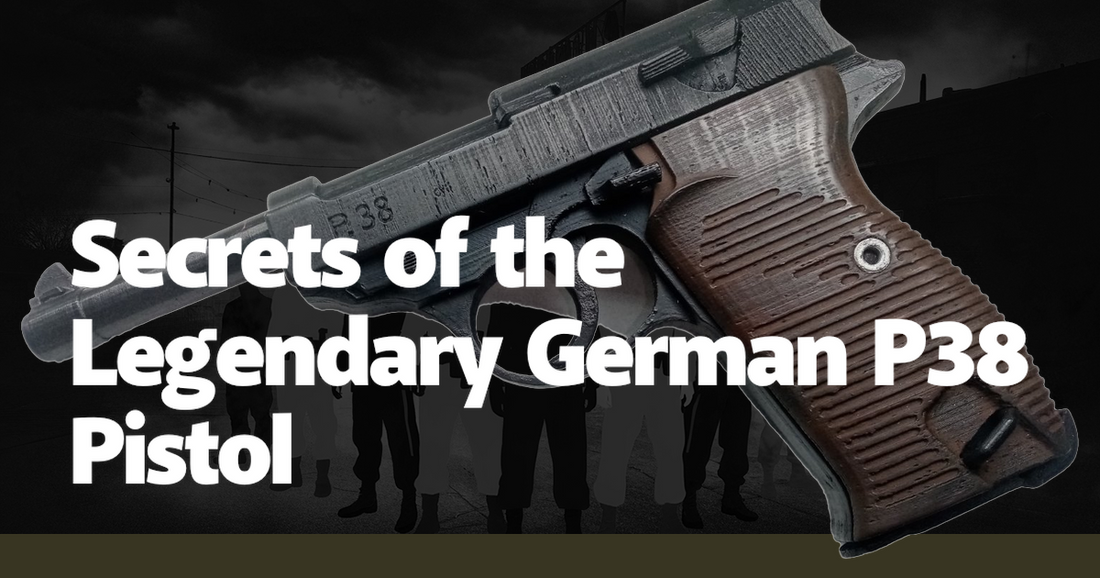The German P38 pistol, a marvel of wartime engineering, holds a storied place in military history. Its inception during World War II marked a significant shift in firearm design and utility, embodying the precision and innovation for which German armaments were renowned. Conceived as a replacement for the aging Luger P08, the P38 was developed by Walther in 1938, hence the name. Unlike its predecessor, the P38 was designed for mass production, featuring a streamlined manufacturing process that prioritized reliability and ease of use. This pistol became a symbol of German ingenuity, blending advanced mechanics with practical battlefield applications.
One of the P38's most revolutionary features was its double-action trigger mechanism, a first for a military sidearm. This innovation allowed soldiers to fire the first round without manually cocking the hammer, providing a significant tactical advantage in combat situations. The double-action mechanism was complemented by a decocking lever, which safely lowered the hammer without discharging the weapon. This combination of features made the P38 not only safer but also quicker to deploy, a critical factor in the heat of battle. The pistol's design was a testament to Walther's forward-thinking approach, setting a new standard for military firearms.
The P38’s durability was another hallmark of its design. Constructed with a solid steel frame and slide, the pistol was built to withstand the rigors of wartime use. Its robust construction ensured that it could endure harsh conditions, from the freezing Russian front to the sweltering deserts of North Africa. Anecdotes from soldiers who wielded the P38 often highlight its reliability; many recount how the pistol continued to function flawlessly despite being exposed to mud, sand, and extreme temperatures. This resilience made the P38 a trusted companion for German troops, who relied on it in the most dire circumstances.
Accuracy was another area where the P38 excelled. The pistol featured a fixed barrel design, which contributed to its exceptional precision. This design choice minimized barrel movement during firing, allowing for more consistent shot placement. Soldiers and officers alike praised the P38 for its accuracy, often citing it as superior to other sidearms of the era. The pistol's sights were also carefully calibrated, offering a clear and precise aiming system that further enhanced its effectiveness. In the hands of a skilled marksman, the P38 could deliver deadly accuracy, making it a formidable weapon in both close-quarters and ranged engagements.
The P38's influence extended beyond the German military, catching the attention of Allied forces who encountered it on the battlefield. Captured P38s were often prized as war trophies, with many Allied soldiers preferring them over their standard-issue sidearms. The pistol's advanced features and reliable performance made it a sought-after item, leading to its adoption by various military and police forces around the world after the war. The P38's legacy continued as it influenced the design of numerous post-war pistols, cementing its place in the annals of firearm history.
One notable example of the P38's impact is its role in the development of the Beretta 92, the standard-issue sidearm for the U.S. military for decades. The Beretta 92 borrowed heavily from the P38's design, incorporating its double-action trigger mechanism and decocking lever. This lineage is a testament to the P38's enduring influence on firearm design, showcasing how its innovative features have shaped modern pistols. The P38's legacy is evident in the continued use of its design principles, underscoring its significance as a pioneering firearm.
The P38's storied history is also reflected in popular culture, where it has appeared in numerous films, television shows, and video games. Its distinctive silhouette and historical significance make it a favorite among filmmakers and game developers, who often use it to evoke the era of World War II. The P38's presence in media has helped to cement its status as an iconic weapon, recognized by enthusiasts and casual observers alike. This cultural impact speaks to the pistol's lasting legacy, as it continues to capture the imagination of people around the world.
In conclusion, the German P38 pistol stands as a testament to the ingenuity and craftsmanship of its creators. Its innovative design, exceptional durability, and remarkable accuracy made it a formidable weapon during World War II and beyond. The P38's influence on subsequent firearm designs and its enduring presence in popular culture underscore its significance as a legendary sidearm. As we reflect on the secrets of the P38, we gain a deeper appreciation for the technological advancements and historical context that shaped this iconic pistol. Its legacy endures, a symbol of excellence in firearm design and a reminder of the pivotal role it played in military history.

